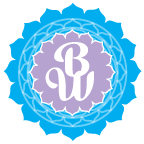Headaches and Ayurveda
When I was a young teen, I started getting Migraines. They were debilitating, with light and noise sensitivity and nausea. It is no wonder that migraines are the second most disabling medical condition world-wide.[1] The migraines were hereditary and hormonally related. After years of medications and various treatments, I started Biofeedback, and that helped a lot. However, I still had to take medications if I didn’t catch the headache early enough. Eventually, I grew out of them as my hormones balanced. I wish I had known about Ayurveda back then to help me get to the root cause of my headaches.
There are lots of different types of headaches: tension, migraine, cluster, sinus, and many more. Tension-type headaches are the most common type of headaches.[2] Most tension headaches are due to stress, and neck or shoulder tension.
Ayurveda, “The Science of Life”, looks at headaches through the lens of the five elements and the doshas. How you treat a headache depends on the dominant dosha. We can see that dominant dosha by looking at the symptoms of the headache. Some headaches have multiple doshas at play. Aṣṭāñga Hṛdayam, a classic Ayurveda text, lists ten types of headaches.[3] This is a simple guide to treating general headaches.
VATA TYPE
A Vata type headache is in the occipital area, which is located at the base of the skull. The pain is a severe pricking, throbbing, and it can radiate out or move. Vata type headaches are associated with neck and shoulder tension, back stiffness/pain, constipation, fear, anxiety and stress.
A vata type headache is worse when you move body and better when you rest. If is often associated with dehydration. If dehydration is the cause of the headache, hydration will fix it quickly.
What to Do:
1) Treat constipation by taking Triphala at bedtime.
2) Massage your neck & shoulders with medicated oil before showering. Use that same oil to massage your head and feet at night before bed.
3) Use nasya (medicated oil nose drops) before bed.
4) Make a head paste with ¼ tsp nutmeg and water and leave on for 30 minutes.[4]
PITTA TYPE
A Pitta type headache starts in temples and spreads to the central part of the head. The headache is generally felt behind the eyes. These headaches are caused by Pitta imbalances in the stomach and intestines, often due to acidity. Pitta headaches may also be cause by unresolved anger.
The pain is characterized by a shooting, burning, or piercing pain which is worse by bright light, heat, or eating Pitta aggravating foods (sour, salty and spicy). This may be accompanied by nausea, dizziness and/or burning in the eyes.
What to Do:
1) Eat Pitta pacifying foods.
2) Drink 2 tbs. of aloe juice 2-3x/day
3) Try a cumin-coriander room temperature tea.
4) Use a ghee nasya (nose drops) at bedtime.
5) Make a head paste with1 tsp sandalwood mixed with water and leave on for 30 minutes.
6) Oil your head and feet with Brahmi, Bhringaraj, or coconut oil at night.
7) Avoid direct sun and keep your head covered in the sun.[5]
KAPHA TYPE
A Kapha type headache often occurs in late winter or spring (Kapha season), mornings or evenings (Kapha time 6-10am & pm) and gets worse when you bend down. It is often accompanied by a runny nose or cough. It is a dull and deep-seated pain which often start in upper front of the skull, moves down the forehead and may move into sinuses. This type of headache is associated with sinus congestion, colds, flus, allergies and hay fever.
What to do:
1) Steam with eucalyptus oil in bottom of shower or put hot water in a bowl, add oil and cover your head with a towel to keep the steam. Do this for five minutes, adding more oil as necessary.
2) Use a Neti pot with salt water to clear out sinuses.
3) Make a head paste with 1 tsp ginger powder and water on forehead, around your nose and upper cheeks. Leave on for 30 minutes and wash off with care.[6]
If you want help with addressing the doshic imbalance(s) that are at the root of your headaches, schedule a session today.
[1] https://www.sciencedirect.com/sdfe/pdf/download/eid/1-s2.0-S0025712520301176/first-page-pdf
[2] https://pubmed.ncbi.nlm.nih.gov/30785242/
[3] Vagbhata. Aṣṭāñga Hṛdayam. 5th English edition, Chowkhamba Krishnadas Academy, 2009 (reprint).
[4] Lad, Dr. Vasant. Several books and notes from lectures.
[5] Lad, Dr. Vasant. Several books and notes from lectures.
[6] “ “ “ “
